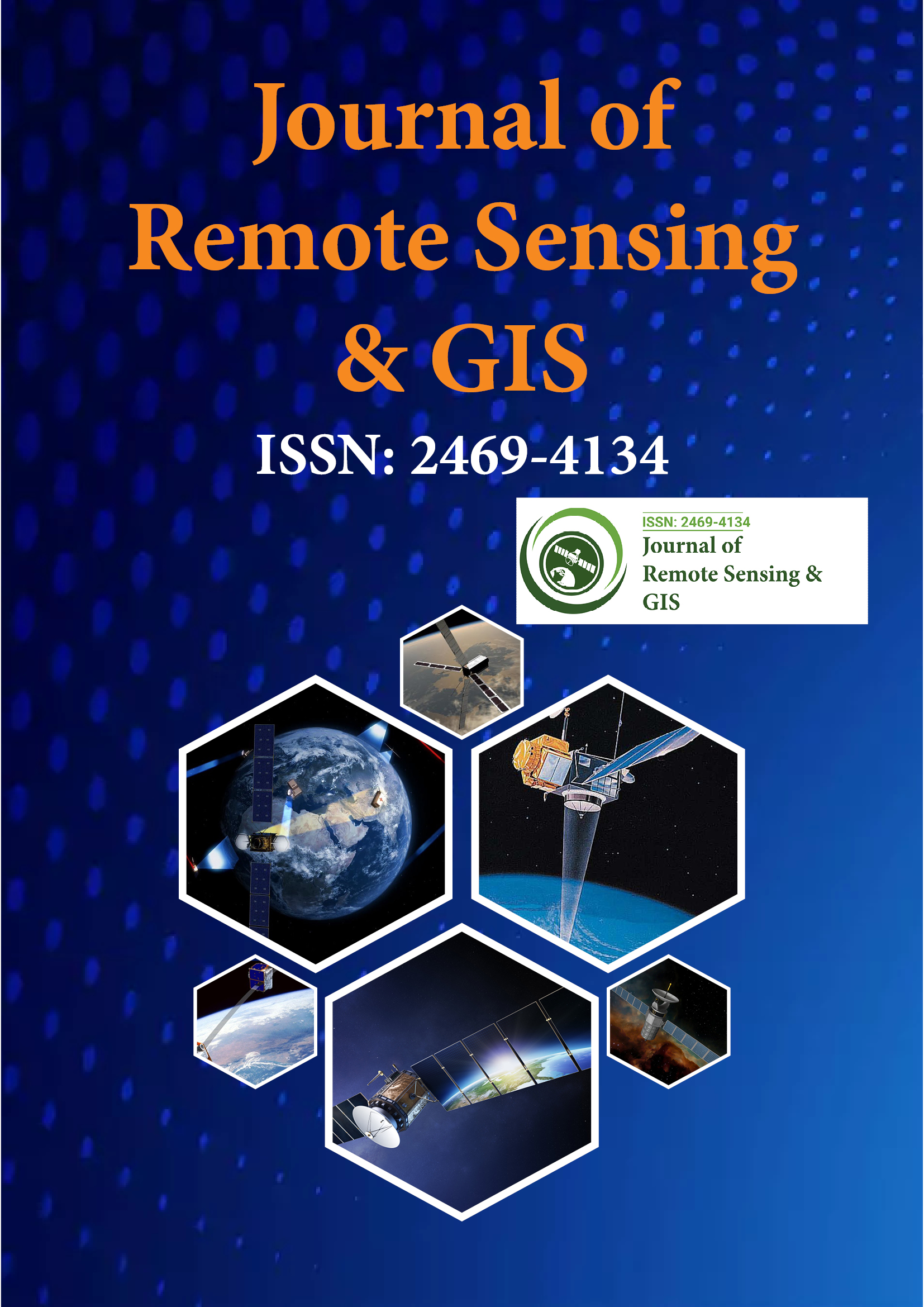Indexed In
- Open J Gate
- RefSeek
- Hamdard University
- EBSCO A-Z
- OCLC- WorldCat
- Publons
- International Scientific Indexing
- Euro Pub
- Google Scholar
Useful Links
Share This Page
Journal Flyer

Open Access Journals
- Agri and Aquaculture
- Biochemistry
- Bioinformatics & Systems Biology
- Business & Management
- Chemistry
- Clinical Sciences
- Engineering
- Food & Nutrition
- General Science
- Genetics & Molecular Biology
- Immunology & Microbiology
- Medical Sciences
- Neuroscience & Psychology
- Nursing & Health Care
- Pharmaceutical Sciences
Opinion Article - (2025) Volume 14, Issue 3
GIS in Transportation Planning and Traffic Flow Analysis
Simon Mike*Received: 05-Sep-2025, Manuscript No. JGRS-25-29361; Editor assigned: 08-Sep-2025, Pre QC No. JGRS-25-29361(PQ); Reviewed: 23-Sep-2025, QC No. JGRS-25-29361; Revised: 30-Sep-2025, Manuscript No. JGRS-25-29361(R); Published: 07-Oct-2025, DOI: 10.35248/2469-4134.24.14.388
Description
Efficient transportation systems are essential for economic development, social connectivity and environmental sustainability. As cities grow and mobility demands increase, transportation planning has become increasingly complex. Planners and engineers require detailed spatial data and analytical tools to understand traffic patterns, assess infrastructure needs and improve accessibility. Geographic Information Systems (GIS) provide an effective platform for integrating, analyzing and visualizing transportation networks and related data, enabling more informed and spatially-aware planning decisions.
GIS enables the mapping of transportation networks including roads, railways, pedestrian paths, bike lanes and public transit routes. These spatial layers can be analyzed to evaluate connectivity, identify gaps and determine areas with poor service coverage. Network analysis functions in GIS allow users to calculate travel distances, estimated times and the most efficient routes between points. This is particularly useful in planning new roadways or optimizing public transport systems to reduce travel times and enhance accessibility for underserved communities.
One of the key applications of GIS in transportation is traffic flow analysis. By integrating data from traffic sensors, GPS devices and mobile applications, GIS can visualize current traffic conditions in real time. Planners can monitor congestion levels, identify bottlenecks and model the impact of traffic on surrounding land uses. Time-series analysis helps detect recurring patterns, such as rush-hour peaks or weekend traffic surges, which can inform scheduling, signal timing and demand management strategies.
GIS is also used in the planning of public transit systems. Spatial analysis helps identify transit deserts areas with high population density but limited public transport options. By examining demographic data in relation to existing transit routes, planners can evaluate the equity of service distribution. GIS supports decisions about where to add new bus stops, metro stations, or park-and-ride facilities to improve access and reduce reliance on private vehicles. Ridership data, when mapped over time, reveals which routes are most utilized and which may require redesign or increased capacity.
Accident analysis is another area where GIS proves valuable. Road traffic crashes can be geocoded and analyzed spatially to identify hotspots locations with high frequencies of accidents. Overlaying accident data with road design, traffic volumes and lighting conditions helps identify contributing factors such as poor visibility, confusing signage, or dangerous intersections. Based on these findings, targeted interventions like road redesign, signal improvements, or speed limit changes can be implemented to improve safety.
In logistics and freight transport, GIS is used to optimize delivery routes and distribution networks. Companies can model different scenarios to minimize fuel use, travel time and operational costs. Warehousing locations, delivery zones and road conditions are analyzed to streamline supply chains and enhance service efficiency. The integration of GIS with vehicle tracking systems allows for real-time monitoring of fleet movements and rapid response to disruptions.
Environmental impacts of transportation infrastructure can also be assessed using GIS. By overlaying planned road or railway alignments with ecological and land use data, planners can evaluate potential impacts on natural habitats, agricultural areas and protected zones. GIS-based models estimate emissions, noise pollution and land take, supporting the selection of routes that minimize environmental and social disruption. Mitigation measures such as green buffers or wildlife crossings can be incorporated into designs based on spatial analysis.
Emergency response planning benefits from GIS integration with transportation networks. During natural disasters, accurate and up-to-date transportation maps are essential for evacuation planning, access to emergency services and delivery of relief supplies. GIS can simulate various scenarios, such as road closures or detours, to ensure continuity of mobility under stress conditions. Response times for fire, ambulance and police services can be optimized by modeling travel times and coverage areas.
Data visualization is a key strength of GIS. Interactive maps and dashboards enable stakeholders to explore transportation data intuitively and make evidence-based decisions. These visual tools support public engagement by making complex plans more understandable to non-specialists. Community feedback can also be geocoded and integrated into planning processes, ensuring that local needs and preferences are reflected in final designs.
While GIS offers numerous benefits, successful implementation requires accurate and up-to-date data. Transportation networks are dynamic, with frequent changes due to construction, policy updates and user behavior. Data must be regularly maintained and validated to ensure reliable analysis. Integration with external systems such as traffic monitoring platforms, urban planning databases and census data enhances the utility of GIS in transportation planning.
In conclusion, GIS has become an indispensable tool in modern transportation planning and traffic flow analysis. Its ability to integrate diverse datasets, perform spatial modeling and visualize complex systems supports efficient, equitable and sustainable mobility solutions. From optimizing public transit and freight logistics to improving road safety and environmental performance, GIS enables data-driven decision-making across all levels of transportation management. As urbanization and mobility demands continue to evolve, GIS will play an important role in designing smarter and more resilient transportation networks.
Citation: Mike S (2025). GIS in Transportation Planning and Traffic Flow Analysis. J Remote Sens GIS.14:388.
Copyright: © 2025 Mike S. This is an open-access article distributed under the terms of the Creative Commons Attribution License, which permits unrestricted use, distribution and reproduction in any medium, provided the original author and source are credited.

